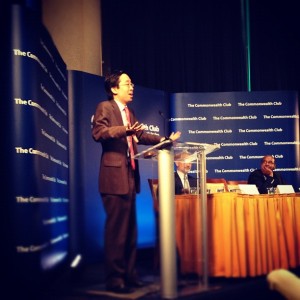Healthcare is not a science problem; it’s an information problem. Thomas Goetz, TEDMED 2010

Bank and airline customers rely on sophisticated systems that allow them to personalize and track complex data. But consumers of the services and products that comprise modern health care – the patients -- currently are offered much more rudimentary data handling. Faxed prescriptions, paper medical charts and X-rays on film -- though not uncommon -- are examples of outdated methods of recording and sharing data.
The forces needed to improve patient information systems are gaining momentum, said Todd Park, US Chief Technology Officer (CTO). Speaking June 18 at The Commonwealth Club in San Francisco, Park acknowledged the movement is in its infancy but said the nation’s healthcare information system is “light years ahead of where it was two years ago.”
Park’s trademark enthusiasm was also evident as he talked about the campaign to provide newly-authorized access to government data to software developers and entrepreneurs. The federal Health Data Initiative seeks to provide Health and Human Services (HHS) data to the public, free and with no strings attached, in effort to trigger the creation of health-related applications.
The campaign has precedent in other government bodies. For example, The Weather Channel exists because National Oceanic and Atmospheric Administration (NOAA) data was made public. Location-based services such as real-time driving directions rely on GPS, a system of satellites also owned by the government.